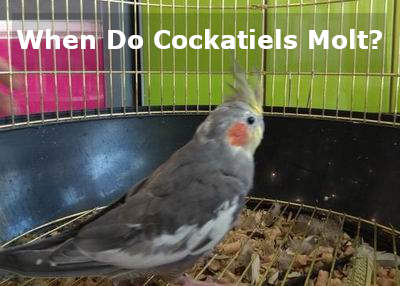
Adopting a baby bird is a demanding challenge. Are you a first cockatiel’s owner? I am sure, you love your feathered friends! After all, these parrots are friendly, sweet, intelligent. Taming cockatiel chicks is easy and pleasant. When do cockatiels molt? Suddenly your pet birds start shedding feathers. They look off-colored, a bit sickly. What should you do in this case? One of your birds might be cranky and obnoxious towards his or her companions.
Above all, don’t worry. Firstly, your cherished birds are healthy; secondly, they are normal. Let’s discuss how to help your pets. We are to make their molting time comfortable, easy and short.
Is it Normal for Cockatiels to Lose Feathers?
Is one of your pet cockatiels looks ugly? It happens if they lack plenty of their feathers. Baby chicks that have no feathers yet look so cute! Right after hatching, babies are fluffy, pale and helpless. Molting birds look strange too. Molting cockatiel may behave grumpy or ruffled.
It happens because feathers are important for birds. They perform several critical functions, such as:
- insulating;
- decorative;
- camouflage;
- waterproofing;
- flight;
- identification.
Feathers don’t only help birds to look beautiful. They keep your cherished pets warm, controlling their body temperature. Quite naturally, you are to avoid draughts and cold snaps. Get best cockatiel cage, spacious enough for cockatiels, safe and well-equipped. Cover it at night. It mimics a nest cavity and protects your lovely birds. So, they get undisturbed sleep and keep quiet.
What Time of Year Do Cockatoos Molt?
Feathers serve as identification. They are necessary to attract a mate or to defense predators. Thus, male cockatiels have bright coloration, to attract female birds. Feathers are essential to fly. Cockatiel losing tail feathers may be not able to fly properly. If it lasts for a while, see their avian vet.
Nevertheless, molting is a natural process. All parrot species get through it 2-3 times a year. Quite naturally, it happens in the fall and spring. We still have to tell apart cockatiel molting or plucking. Let’s consider normal molt factors.
Normal Cockatiel Mutations
| Cockatiels | Male | Female |
|---|---|---|
| Times a Year | 2-3 | 2-3 |
| First Molt Age, Months | 6-9 | 6-9 |
| Coloration before Molting | pale/dull | pale/dull |
| Coloration after | Molting colorful | lighter plumage |
| Molt Duration, Days | 7-14 | 7-14 |
Before their first molt, cockatiels look virtually identical. Replacing old feathers, they get adult plumage. When does it happen? 4-month old cockatiel molting is not typical. If this bird loses many feathers, he or she could be sick. If you haven’t had this chick from a baby, it’s easy to get his or her dates wrong. Anyway, take care of best food for cockatiels. It is to be rich in minerals and vitamins.
So, molting commonly happens between 6-12 months of cockatiels’ age. Only after shredding of old feather, male birds get their vivid orange cheek patches. Their body becomes dark grey. Plumage of female cockatiels is lighter. They get stripes on the underside of their tails and flight feathers. By the way, Loki hasn’t got them yet. But her body is much duller in coloration than Nigel and Yo-Yo.
How Do I Know if My Cockatiel is Molting?
Cockatiels shed feathers. They normally lose several feathers a week: it allows for new growth and is normal. This process might happen at any time of the year. Commonly, birds molt before migration. They get new feathers to fly faster. They improve their aerodynamics. In the wild, birds charge their plumage coloration in late summer. It helps them be less noticeable by predators.
Cockatiels don’t migrate. Unlike nomadic birds, they move only to find a new food source. So, your lovely pets molt only when they become adult. For example, male cockatiels prepare for the breeding season this way. Subsequently, they become brighter to attract female mates. Similarly, female birds do it after egg-laying.
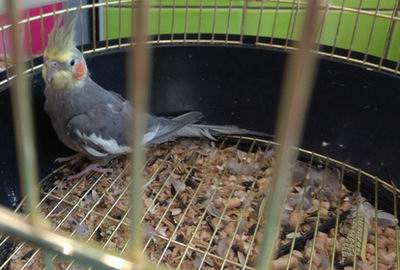
Your bird exhibits some evident signs of molting. Divide them into several groups, such as:
- Physical.
- Behavior.
- Signs of cockatiel feather problems or discomfort.
Do you see a considerable amount of feathers? One of your lovely cockatiels might be molting. You find them on the bottom of the cage and throughout the room. So, cockatiels commonly molt in symmetrical patterns. It maintains balance for flight. It starts with primary, inner-most feathers, for instance, tail feathers shed first. It’s typical for all birds.
Is it Painful for Birds to Molt?
Molting is a stressful process. Subsequently, your lovely birds need a lot of energy. To clarify, you can compare this time only with egg-laying and incubation periods. Besides, an injured or sick bird would be as vulnerable as molting one.
So, your lovely birds do need a lot of your attention. They might appear:
- less active;
- cranky;
- upset;
- listless;
- irritable;
- too quiet or sleepy.
During this period, your birds need special cockatiel molting food. Feathers consist of 90% crude keratins. These high-structural proteins compose of amino-acids. Feathers also make about 10% of the birds’ weight. So, your sweaty cockatiels need to renew their energy.
What Do Cockatiels Eat in the Wild? They consume grasses, plants, seeds, a lot of vegetables and plants. Cereals and grains are nutritional. During molting time, your pet birds need a high-protein, healthy diet. Due to lack of blood supply and proper nutrition, some old, broken feathers may remain. New feather growth ceases. So, your cherished cockatiels might suffer from itchiness.
How to Help a Molting Bird?
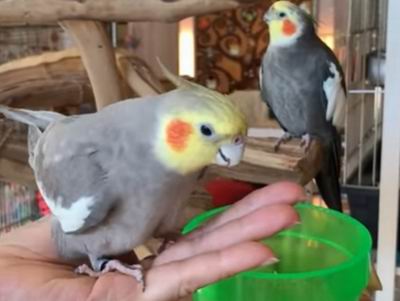
Feather plucking is also possible. It happens when a bird loses a lot of body feathers at once. Likewise, he or she might pluck feathers from pain, making noise. It could be a sign of disease. Also, various factors, like zinc toxicity or allergy, could cause it.
Is your bird losing feathers around neck? It could be a sign of normal molting. Your cockatiel might be sick. Take your lovely pet to an avian vet and check it. Are you sure she or he is out of danger? Just make molting period more comfortable.
- Avoid temperature changes.
- Add more calcium and vitamins to cockatiel’s diet.
- Promote preening.
- Reduce stress.
- Create safe environment.
- Let the bird have 10-12 hours of sleep, at least.
Advice
Cockatiels don’t like temperature changes. They are vulnerable to them, especially during molting time. If it happens, molting lasts longer. It’s more painful. So, keep temperature in the room to be about 75-80 °F. Make sure your pets get rest, sympathize with them. Give the birds enough space. Keep their nutrition balanced. Therefore, it is important to have a suitable cell and quality food mixes. If you do it, your cherished cockatiels get new beautiful plumage fast. Above all, they are healthy and active again. So, you’ll keep playing with your lovely pets, getting a lot of fun and affection.



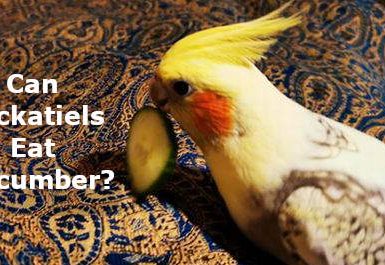
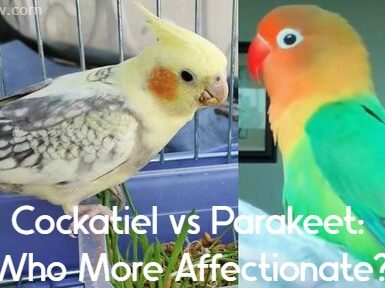
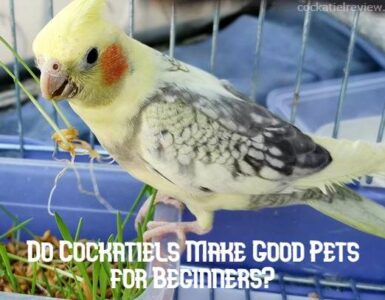
Cockatiel molt is a time of great stress, and many cockatiels will stop eating until they are ready for another molt. The cause of this yearly molt is thought to be related to the disturbance of hormonal levels that occurs due to the cyclical lunar cycle, which is about 13 days. After the first molt, two molts can occur in one year; the first in July and the second the following March.
In the wild, normally, male cockatiels will molt twice a year, one time in the spring and one time in the fall. In captivity, most male cockatiels will molt only once a year. Usually, a male will first start a new molt around age 2 or 3 years old, and this first molt will last for around 3 months. After this first molt, a male cockatiel will usually wait until around age 5 years old to start a new molt.
When do cockatiels molt? That’s the question millions of people have wondered about for years now. It’s one of those things that can’t be answered with just one answer. It depends on the species of cockatiel, the age of the individual cockatiel, experiences of the individual cockatiel, and many other factors.